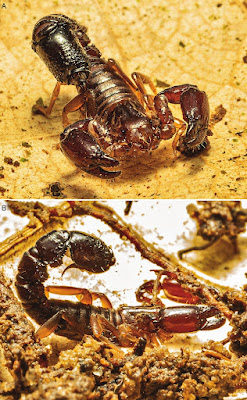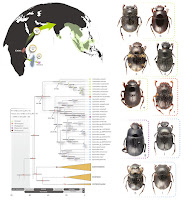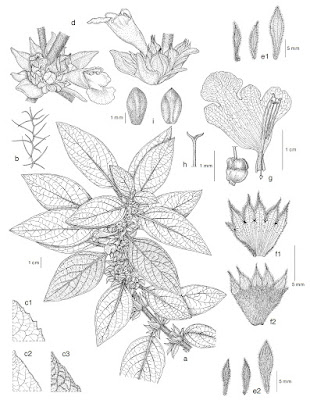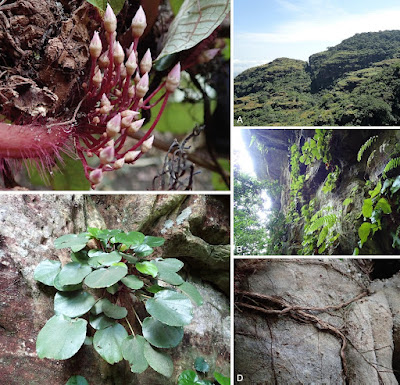Abstract
Giant ichthyosaurs with body length estimates exceeding 20 m were present in the latest Triassic of the UK. Here we report on the discovery of a second surangular from the lower jaw of a giant ichthyosaur from Somerset, UK. The new find is comparable in size and morphology to a specimen from Lilstock, Somerset, described in 2018, but it is more complete and better preserved. Both finds are from the uppermost Triassic Westbury Mudstone Formation (Rhaetian), but the new specimen comes from Blue Anchor, approximately 10 km west along the coast from Lilstock. The more complete surangular would have been >2 m long, from an individual with a body length estimated at ~25 m. The identification of two specimens with the same unique morphology and from the same geologic age and geographic location warrants the erection of a new genus and species, Ichthyotitan severnensis gen. et sp. nov. Thin sections of the new specimen revealed the same histological features already observed in similar giant ichthyosaurian specimens. Our data also supports the previous suggestion of an atypical osteogenesis in the lower jaws of giant ichthyosaurs. The geological age and giant size of the specimens suggest shastasaurid affinities, but the material is too incomplete for a definitive referral. Ichthyotitan severnensis gen. et sp. nov., is the first-named giant ichthyosaur from the Rhaetian and probably represents the largest marine reptile formally described.
Systematic palaeontology
Ichthyopterygia Owen, 1840
Ichthyosauria de Blainville, 1835
?Merriamosauria Motani, 1999
?Shastasauridae Merriam, 1902
Ichthyotitan severnensis gen. et sp. nov.
Diagnosis: Giant, probable shastasaurid ichthyosaur distinguished by the presence of the following unique characters of the surangular: upturned, almost 90 degree angle bend at posterior end; subcircular cross section morphology of the shaft at the position of the coronoid, oblong in Shonisaurus; minor eminence of coronoid process in lateral view, compared with prominent projection in Shonisaurus; bulbous coronoid process displaced laterally and only occupying half of the width of the dorsal surface; massively developed dorsoventral M.A.M.E. ridge; spatulate shaped posterior end; and possibly dorsoventral height of posterior end in adults being more than 20% larger than in either Shonisaurus popularis or Shonisaurus sikanniensis.
Holotype: BRSMG Cg3178, a large right surangular comprising the posterior end and parts of the middle and anterior sections.
Referred material: BRSMG Cg2488, a large left surangular comprising the posterior end and a portion of the shaft.
Type locality and horizon: The type specimen was collected from the Upper Triassic Westbury Mudstone Formation (latest Rhaetian) at Blue Anchor, Somerset, UK. The referred specimen was collected from the Upper Triassic Westbury Mudstone Formation (latest Rhaetian) 0.8 m below the junction with the Cotham Formation, at Lilstock, Somerset, UK.
Etymology: Giant fish lizard of the Severn. Ichthys derived from Greek meaning fish, taken from ichthyosaur meaning “fish lizard”, and -titan (Greek for giant), after the large size. Severn after the River Severn Estuary, Somerset, UK, where the remains were discovered and Latin -ensis pertaining to the location.
Dean R. Lomax, Paul de la Salle, Marcello Perillo, Justin Reynolds, Ruby Reynolds and James F. Waldron. 2024. The Last Giants: New Evidence for Giant Late Triassic (Rhaetian) ichthyosaurs from the UK. PLoS ONE. 19(4): e0300289. DOI: 10.1371/journal.pone.0300289



















































